Organic acid improves balance of intestinal bacterial flora and performance of shrimp grown in different systems
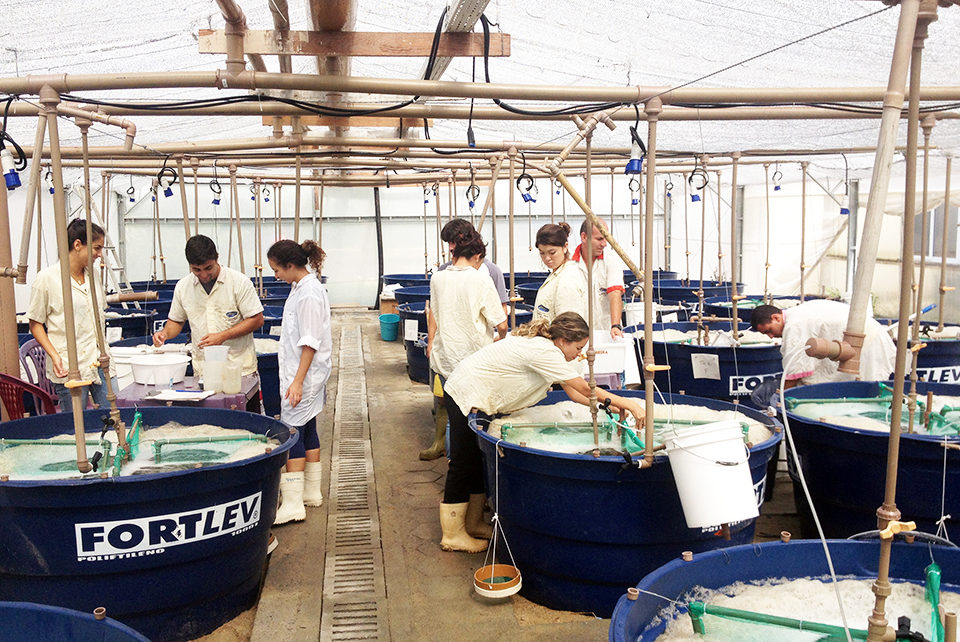
The emergence of bacterial diseases such as early mortality syndrome, caused by a strain of Vibrio parahaemolyticus, has caused negative impacts on the production of marine shrimp. With the use of antibiotics in animal production prohibited in many countries due to environmental problems and the selection of resistant bacteria, the industry has sought new feed additives to improve the nutrition and health of aquatic animals.
The use of organic acids and their salts in animal production has gained attention in recent years. These additives may promote benefits to cultured animals that include inhibiting pathogenic bacteria in the gastrointestinal system, development of highly available energy, increased absorption of macro- and micronutrients in diets and, therefore, greater productivity. Among the organic acids, sodium butyrate deserves special attention. In swine and poultry production, studies have shown benefits from dietary supplementation with butyrate, such as increased weight gain, feed efficiency and immunological parameters, along with benefits for intestinal mucus. However, despite its current commercial use in aquaculture, studies of sodium butyrate’s effects in marine shrimp diets have been limited.
Shrimp performance in Clearwater
With the financial support of the Brazilian Ministry of Fisheries and Aquaculture and the Financier of Studies and Projects, the authors conducted studies at the Universidade Federal de Santa Catarina in Brazil to evaluate the potential use of sodium butyrate as a feed additive for Pacific white shrimp (Litopenaeus vannamei) in different culture systems.
Four diets were evaluated for a clearwater system: a control diet without supplementation and three diets containing sodium butyrate at concentrations of 0.5, 1.0 or 2.0 percent. The treatments were evaluated in triplicate, totaling 12 experimental units.
Each experimental unit was populated with 150 shrimp with an average weight of 2.5 grams, resulting in a density of 12 shrimp per square meter. The experimental units consisted of 6,000-L fiberglass tanks with aeration and heating systems that maintained 29.0 ± 0.4 degrees-C. The tanks also had a water-exchange system that supported daily exchange up to 50 percent of the tank volume.
After 50 days of culture, shrimp fed diets supplemented with sodium butyrate presented final weights 9.9 and 16.1 percent higher than those for the shrimp fed the control diet. Shrimp that received the diet supplemented with 2.0 percent sodium butyrate also showed higher survival, feed efficiency and productivity (Table 1).
Silva, Growth performance of L. vannamei, Table 1
| Treatment | Final Weight (g) | Survival (%) | Feed Efficiency | Yield (kg/ha) |
|---|
Treatment | Final Weight (g) | Survival (%) | Feed Efficiency | Yield (kg/ha) |
|---|---|---|---|---|
| Control | 9.3 ± 0.9a | 88.7 ± 0.6a | 0.53 ± 0.03a | 992 ± 89a |
| Butyrate 0.5% | 10.6 ± 0.2b | 92.3 ± 1.5ab | 0.59 ± 0.01ab | 1,176 ± 5b |
| Butyrate 1.0% | 10.3 ± 0.1b | 89.3 ± 0.6ab | 0.55 ± 0.01ab | 1,100 ± 0b |
| Butyrate 2.0% | 10.8 ± 0.5b | 93.0 ± 1.4b | 0.61 ± 0.01b | 1,237 ± 23b |
Shrimp performance in biofloc system
Eight experimental units of 800-L volume were stocked with 200 shrimp with an average weight of 3.9 grams, maintaining an initial density of 250 shrimp per cubic meter. The units had 4 square meters of bottom and side surface and 2 square meters of additional artificial substrate in order to increase the well-being and comfort of the animals.
In addition, the units had aeration and heating systems, and a water clarifier to maintain the total solids concentration between 400 and 600 mg/L. The treatments consisted of shrimp fed a diet supplemented with 2 percent sodium butyrate and shrimp fed a control diet without supplementation.
After 42 days of cultivation, shrimp given the diet supplemented with sodium butyrate had higher survival and, consequently, higher productivity. However, no difference in weight gain or feed efficiency was observed between the treatments (Table 2).
Silva, Growth performance of L. vannamei, Table 2
| Treatment | Final Weight (g) | Survival (%) | Feed Efficiency | Yield (kg/ha) |
|---|
Treatment | Final Weight (g) | Survival (%) | Feed Efficiency | Yield (kg/ha) |
|---|---|---|---|---|
| Control | 13.3 ± 0.3 | 76.5 ± 0.5a | 0.45 ± 0.05 | 25,400 ± 1,500a |
| Butyrate 2% | 13.3 ± 0.5 | 81.6 ± 2.8b | 0.46 ± 0.06 | 27,110 ± 460b |
Effects against vibrio species
The antimicrobial effects of sodium butyrate against three strains of Vibrio (Vibrio harveyi, V. alginolyticus and V. anguillarum) were evaluated in vitro in microplates at pH values of 6 and 7. The sodium butyrate had an antimicrobial effect against all three Vibrio strains. At pH 6, the minimum inhibitory concentrations were between 7.5 and 15 mM, whereas at pH 7, total inhibition was observed between the concentrations of 30 and 120 mM.
In vivo bacterial counts of Vibrio species were performed in shrimp cultured in clearwater and bioflocs (Figs. 1 and 2). In clearwater culture, dietary supplementation of sodium butyrate at 0.5 to 2.0 percent showed reductions of 95.3 to 98.4 percent in Vibrio counts in the shrimp’s intestines. In the biofloc system, the shrimp fed diets supplemented by 2 percent sodium butyrate had a decrease of 92.3 percent.
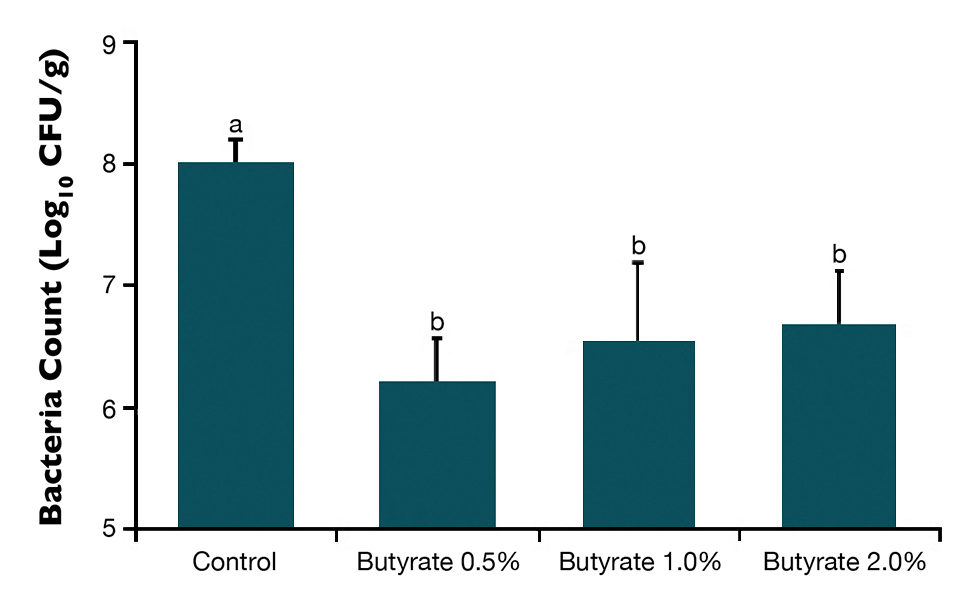
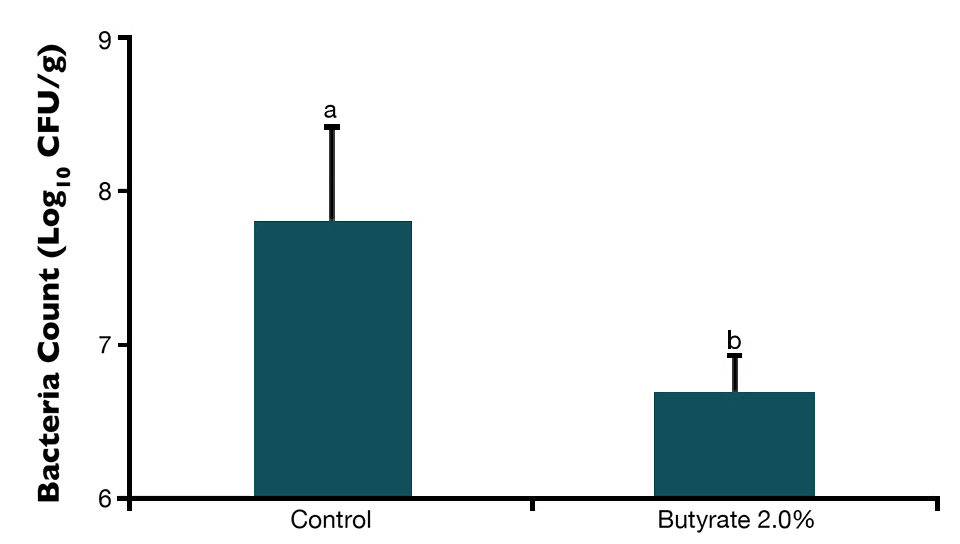
Perspectives
The authors believe that sodium butyrate has the potential to be used as a feed additive for L. vannamei, improving the balance of intestinal bacterial flora and performance of marine shrimp grown in different systems.
However, further assessments of the effects of dietary supplementation with butyrate, in physiological and morphostructural alterations in the digestive tracts of marine shrimp, are needed to better understand the action mechanisms of this feed additive. In addition, since the organic salts are highly water-soluble, coated forms of organic salts should be evaluated to improve efficacy, as well as the use of lower concentrations in the diets.
(Editor’s Note: This article was originally published in the July/August 2014 print edition of the Global Aquaculture Advocate.)
Now that you've reached the end of the article ...
… please consider supporting GSA’s mission to advance responsible seafood practices through education, advocacy and third-party assurances. The Advocate aims to document the evolution of responsible seafood practices and share the expansive knowledge of our vast network of contributors.
By becoming a Global Seafood Alliance member, you’re ensuring that all of the pre-competitive work we do through member benefits, resources and events can continue. Individual membership costs just $50 a year.
Not a GSA member? Join us.
Authors
-
Bruno Corrêa da Silva
Empresa de Pesquisa Agropecuária e
Extensão Rural de Santa Catarina
Centro de Pesquisa e Desenvolvimento em Aquicultura e Pesca
Antônio Heil Street, Km 6
Itajaí, Santa Catarina, Brazil -
Felipe do Nascimento Vieira
Universidade Federal de Santa Catarina
Departamento de Aquicultura
Laboratório de Camarões Marinhos
Florianópolis, Santa Catarina, Brazil -
José Luiz Mouriño
Universidade Federal de Santa Catarina
Departamento de Aquicultura
Laboratório de Camarões Marinhos
Florianópolis, Santa Catarina, Brazil -
Walter Quadros Seiffert
Universidade Federal de Santa Catarina
Departamento de Aquicultura
Laboratório de Camarões Marinhos
Florianópolis, Santa Catarina, Brazil
Tagged With
Related Posts
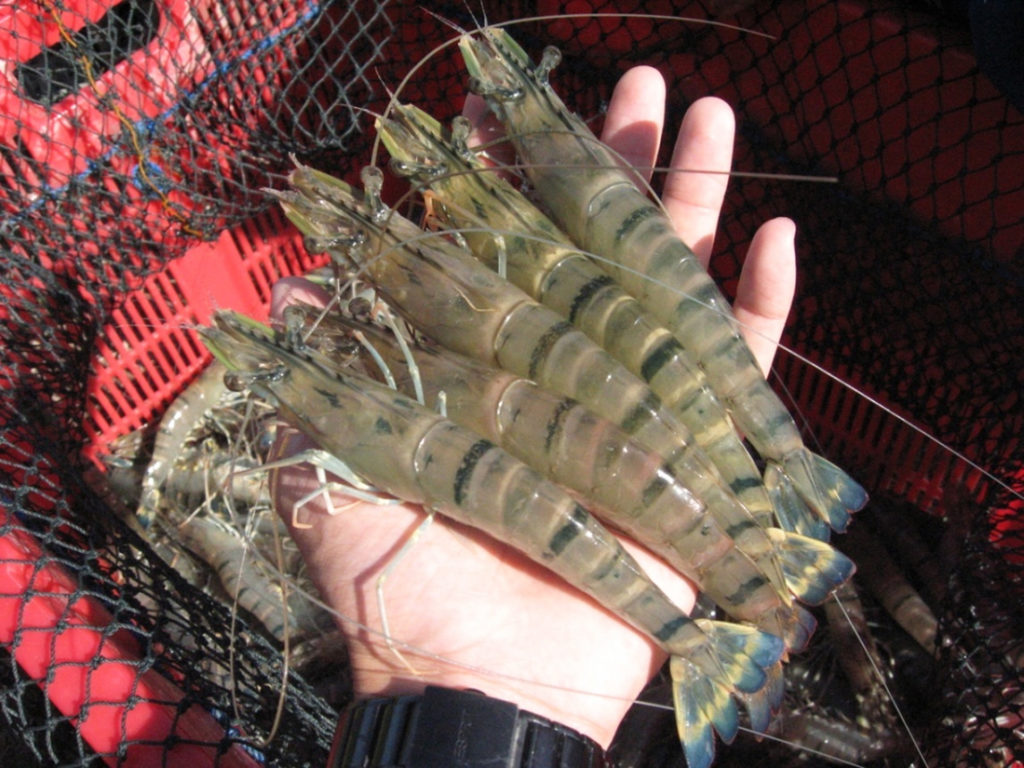
Health & Welfare
Organic acids in aquafeeds: A potential substitute for antibiotics
Prophylactic use of antibiotics in animal production is being banned or restricted by many countries. A potential substitute for antibiotic growth promoters in aquafeeds is organic acids, which are the focus of much research and commercial interest.
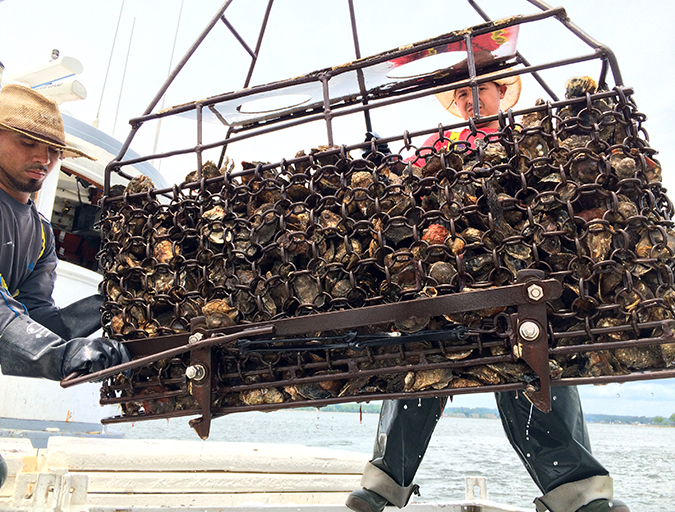
Intelligence
As ocean temperatures rise, so too will vibrio outbreaks
A study using a half-century of data has linked climate change and warming sea temperatures with an increase in illnesses from the common vibrio bacteria. Shellfish growers, fighting a particularly virulent strain of Vibrio parahaemolyticus, are changing their harvest protocols.

Aquafeeds
A look at protease enzymes in crustacean nutrition
Food digestion involves digestive enzymes to break down polymeric macromolecules and facilitate nutrient absorption. Enzyme supplementation in aquafeeds is a major alternative to improve feed quality and nutrient digestibility, gut health, compensate digestive enzymes when needed, and may also improve immune responses.
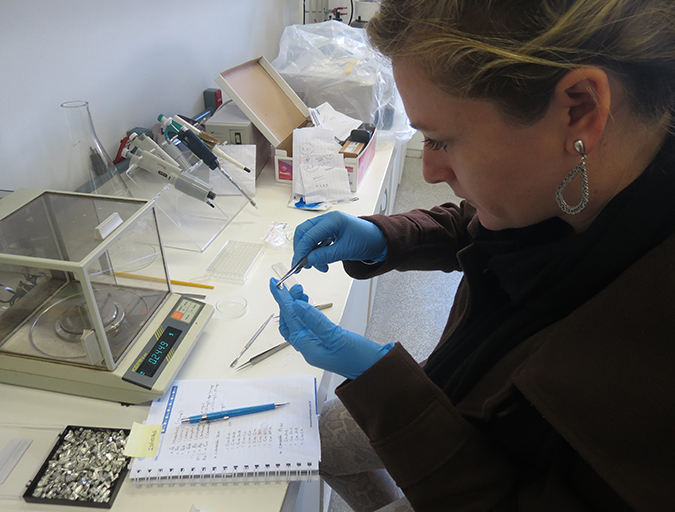
Aquafeeds
Biofloc consumption by Pacific white shrimp postlarvae
The stable isotopes technique with δ13C and δ15N can be used to determine the relevance of different food sources to shrimp feeding during the pre-nursery phase of Litopenaeus vannamei culture. During this trial, different types of commercial feed, microalgae, Artemia sp. nauplii and bioflocs were used as food sources.



